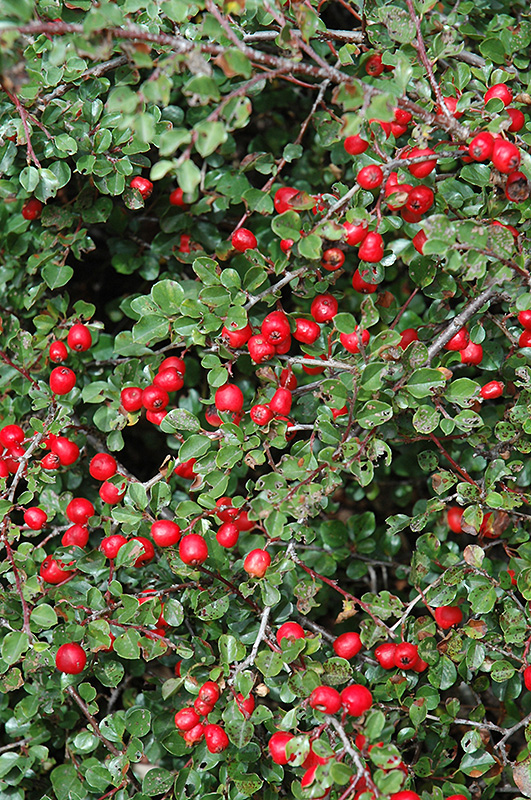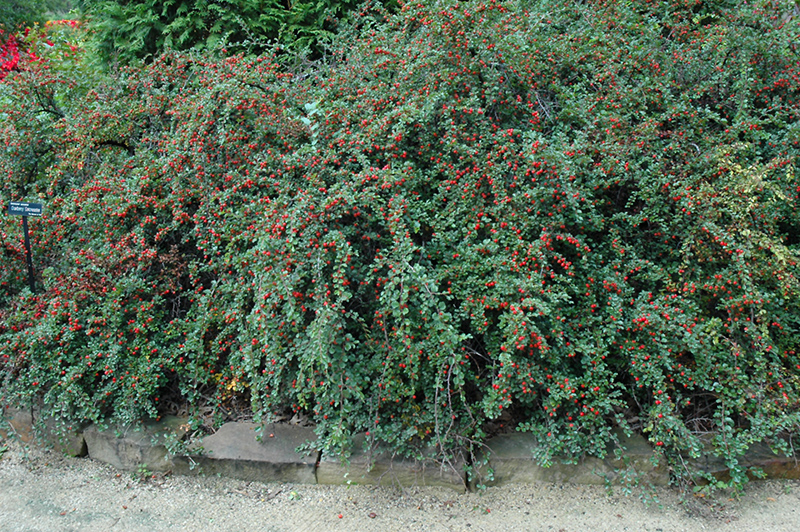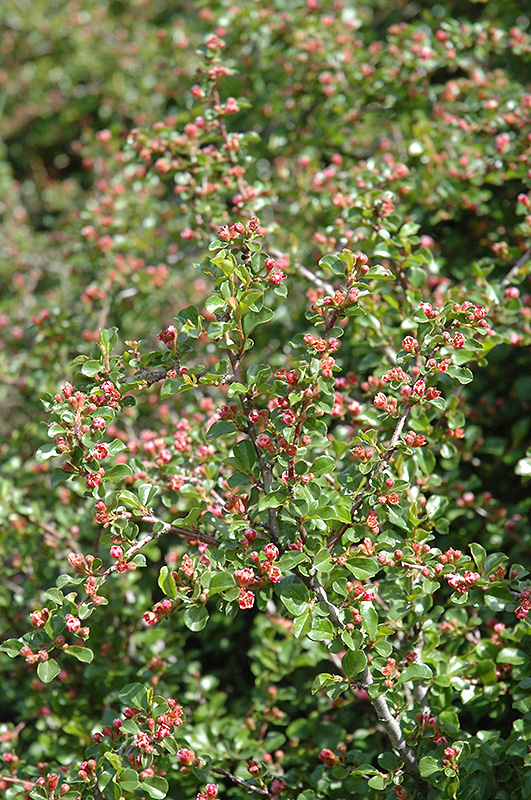Cranberry Cotoneaster
Cotoneaster apiculatus
Height: 3 feet
Spread: 5 feet
Sunlight:
![]()
![]()
Hardiness Zone: 4b
Description:
Certainly one of the most popular medium sized groundcovers, a mounded spreading shrub with dense, tightly held branches; pretty pink flowers in spring along the branches, followed by striking red fruit in fall, a versatile plant for general landscape use
Ornamental Features
Cranberry Cotoneaster is primarily grown for its highly ornamental fruit. It features an abundance of magnificent red berries from late summer to late fall. It features tiny clusters of pink flowers along the branches in late spring. It has dark green deciduous foliage. The tiny glossy round leaves turn an outstanding brick red in the fall.
Landscape Attributes
Cranberry Cotoneaster is a multi-stemmed deciduous shrub with a shapely form and gracefully arching branches. It lends an extremely fine and delicate texture to the landscape composition which should be used to full effect.
This shrub will require occasional maintenance and upkeep, and should not require much pruning, except when necessary, such as to remove dieback. It has no significant negative characteristics.
Cranberry Cotoneaster is recommended for the following landscape applications;
- Mass Planting
- General Garden Use
- Groundcover
Planting & Growing
Cranberry Cotoneaster will grow to be about 3 feet tall at maturity, with a spread of 5 feet. It tends to fill out right to the ground and therefore doesn't necessarily require facer plants in front. It grows at a slow rate, and under ideal conditions can be expected to live for approximately 30 years.
This shrub does best in full sun to partial shade. It is very adaptable to both dry and moist growing conditions, but will not tolerate any standing water. It is not particular as to soil type or pH, and is able to handle environmental salt. It is highly tolerant of urban pollution and will even thrive in inner city environments. This species is not originally from North America.



